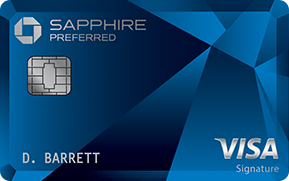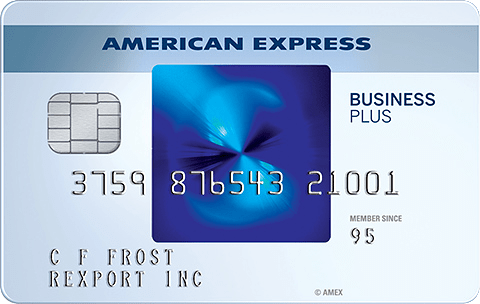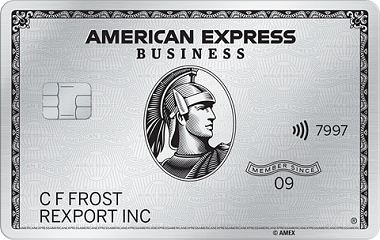- Day 1 – What’s Travel Hacking all about?
- Day 2 – Getting Organized
- Day 3 – Types of Miles and Points
- Day 4 – Credit Card Strategy
- Day 5 – Southwest Companion Pass
- Day 6 – Business Credit Cards
- Day 7 – Hotel Free Night Sign-Up Bonuses & Annual Certificates
- Day 8 – How to Apply & Track
- Day 9 – Not Instantly Approved
By now you should have your first credit card in hand or are waiting for it to arrive in the mail. There are a few things to do when it arrives:
- Activate it – your card will arrive with a sticker on it with instructions on how to activate it. Typically you call an automated 1-800 number and type in your card number, last four digits of your social security number, etc. The sticker may also list a website where you can activate it online.
- Registering it – for online access. If you already have an account with this bank with online access, your new card usually is automatically added, but if this is a new bank that you haven’t used before, you will have to setup an online account so you can access your statements, pay your bill, use your rewards, etc.
- Log it – now is also the time to log it into your tracking spreadsheet (Lesson 8) and your financial accounts tracking (Mint, Personal Capital, etc from Lesson 2)
- Use it – to meet the sign-up bonus spending requirement
Ways to Spend
Spending $5000 in 3 months (or whatever your new card’s sign up bonus spending requirement) may sound daunting to some people who have low expenses. It’s best to break it down $5000/3 = $1667/month which sounds a little more manageable. Put all of your spending on this credit card – from the smallest possible charge such as parking fees. You will quickly see how everything adds up quickly.
Here are a few obvious ways to spend:
- Normal spending – at grocery stores, gas stations, clothing stores, restaurants, etc.
- Monthly bills – electric, cell phone, natural gas bill, cable/internet, lawn/pool maintenance, water bill, HOA fees, etc
- Insurance bills – life, automobile, renters, medical, etc
- College/school tuition
- Doctor/Dentist bills
And a few not so obvious ways to spend:
- Prepay expenses – go to Starbucks a lot or have an upcoming home improvement project? buy gift cards for these places to be used later
- Pay the group bill – going out with a bunch of friends for dinner? offer to pay the bill at the end of the night and let others pay you back with cash or Venmo
- Work expenses – do you have any work expenses that you can put on your credit card and get reimbursed from your company for?
- Pay taxes – do you owe the federal government taxes? use your credit card to pay your tax bill for a small fee – here are the IRS approved credit card processors
- Upcoming vacation – pay for an upcoming vacation – a great example is a cruise. Usually only a deposit is required when you book with final payment due a certain amount of time before your sailing date.
- Airline gift cards – do you always fly a certain airline because they have the most flights from the city you live in? buy a few gift cards for that airline to be used at a later date
- Pay bills that don’t accept credit cards using Plastiq – need to pay rent or a mortgage? Plastiq will charge your credit card (for a small fee) and send your mortgage or rent company (or a babysitter, contractor, etc) a check. I use this service every month just to earn additional Citi Thank You points. If you use this link to sign up and make $500 in payments, your next $500 in payments will be fee-free.
- Charity – make charitable donations using your credit card. A lot of churches accept credit cards for weekly giving.
More advanced techniques for spending:
- Micro Loans – if you have some money to float, make micro-loans to using Kiva.org which are paid back monthly over a period of time.
- Gift Card Reselling – buy giftcards when there is a sale/deal going on and resell them at Raise.com or a similar site
- Visa Gift Cards – buy variable load (up to $500) Visa debit gift cards for a small fee at stores that accept credit cards (I usually buy at grocery stores which typically give you a discount on gas which more or less offsets the visa gift card fee). Then use the Visa gift cards by:
- Save and use for normal everyday expenses
- Buy money orders and deposit into your bank account (the last 4 digits of Metabank Visa debit cards is the debit PIN number). Money orders at Walmart only cost 70 cents and most stores accept Visa debit cards as payment
- Open a GoBank account and load account at Walmart for free with Visa debit gift cards.
- Venmo allows a user to have 6 active cards (credit or debit) and 8 total cards over a 6 month rolling period – add Visa debit gift cards to Venmo and pay a friend/spouse/etc
- Open a checking or savings account at a bank that will allow funding of the initial deposit with a credit card. Doctor of Credit keeps a comprehensive list of bank that accept credit cards for funding. In late 2016, I funded a PNC checking account that had a $300 sign-up bonus with $2000 using my Chase Visa credit card.
- Open up a SquareUp account – if you use this special link, you will receive $1000 in free credit card processing.
Using both PersonalCapital and my spreadsheet, it is easy to track how much spending you already completed on the credit card and how much you have left to spend. In no time you will meet the sign-up bonus spending requirement and earn the bonus!
When does bonus post?
If you read the fine print terms and conditions of the credit card offer, it most likely tells you when you should expect to receive your new sign-up bonus. In my experience and depending on the bank, the sign-up bonus will either post within a day of the transaction that put you over the spending requirement or on the next statement closing date following you meeting the requirement. Be sure to check your account to make sure the bonus posts and record the bonus received date on the google spreadsheet. If the bonus does not post, call up customer service and ask why – it could be a simple error (like you including the annual fee as spend when it does NOT count).
Need to Knows
- Use your new card for ALL PURCHASES – even for the smallest purchase such as a parking meter
- You can ‘spend’ fairly large amounts on new credit cards by paying taxes, rent, and mortgages using online services which typically have fees associated with these large transacations
- There are more advanced techniques for ‘spending’ on credit cards by buying gift cards, opening bank accounts, etc



